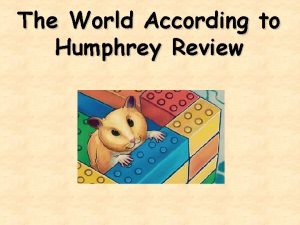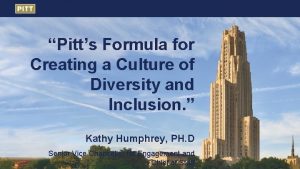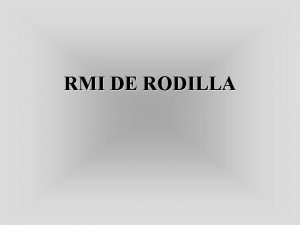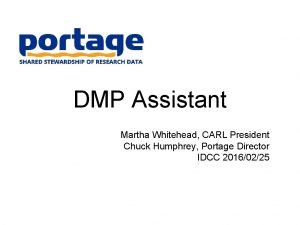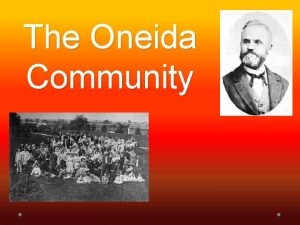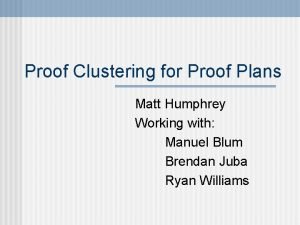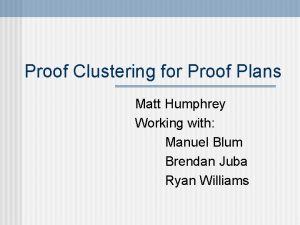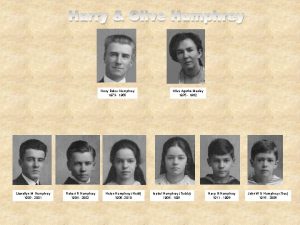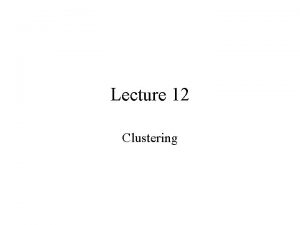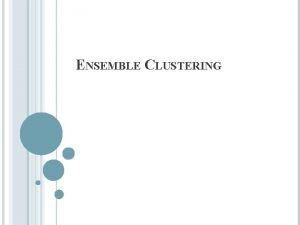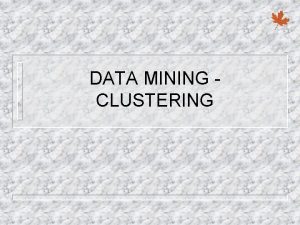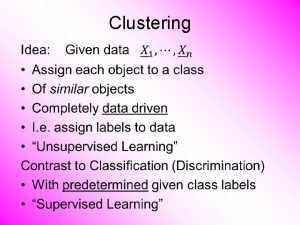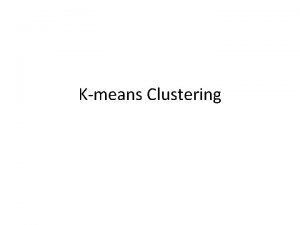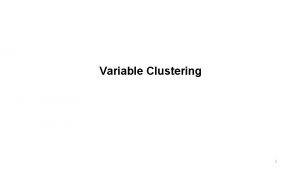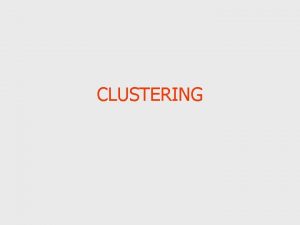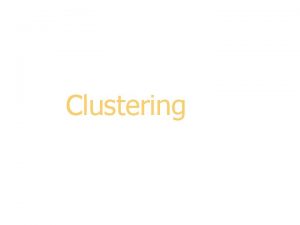Proof Clustering for Proof Plans Matt Humphrey Working















- Slides: 15

Proof Clustering for Proof Plans Matt Humphrey Working with: Manuel Blum Brendan Juba Ryan Williams

What is Proof Planning? n Informal Definition n n See a proof in terms of “ideas” Different levels of abstraction Represented as a graph, tree, DAG? Tool for directing exhaustive proof search Formal Definition n No perfect all-encapsulating definition Usually defined per theorem proving system The concept itself is mostly informal

Example Proof Plan

Why Proof Planning? Cuts down proof search space n Bridges gap between human/computer n Proof = Guarantee + Explanation (Robinson 65) n And… n It can be automated n It has been automated (to some extent) n

Why Study This? n Artificial Intelligence Perspective What can/cannot be modeled by computer? n How to model something so informal n n Cognitive Psychology Perspective Intuitions about human thought process n Reasoning about human ability to abstract n n Practical Perspective n Proving theorems automatically is useful

Learning by Example n Previous proofs as hints n n What information can be gained? What has been tried? Analogical Reasoning n Strategies (higher level) n Methods, Tactics (lower level) n And in most cases a combination of these n

Proof Clustering n Proof Planning can be aided by: The ability to recognize similarity in proofs n The ability to extract information from proofs n n If we can cluster similar proofs, we can: More easily generalize a strategy or tactic n Determine which proofs are useful examples n Build a proof component hierarchy n Automate the process of learning techniques n

Ωmega Proof Planning System with LearnΩmatic n n Uses examples as tools in the proving process Heuristics guide the proof search n n n Uses learned proof techniques (methods) Selects what it feels to be the most relevant methods LearnΩmatic n n Learns new methods from sets of examples Increases proving capability on the fly Minimizes hard-coding of techniques Increases applicability, no domain limitation

Learning Sequence

An Example of Learning… Extended Regular expression format n A grouping of ‘similar’ proof techniques: assoc-l, inv-r, id-l assoc-l, inv-l, id-l assoc-l, inv-r, id-l n …generalizes to the method: assoc-l*, [inv-r | inv-l], id-l n

Problems with the LearnΩmatic n Relies on ‘positive examples’ only User must have knowledge about proofs n Hard to expand the system’s capabilities n Could produce bad methods for bad input n n Learning new methods is not automated! n Waits for the user to supply clusters

Specific Goal n Enhance LearnΩmatic with fully automated proof clustering First: be able to check a cluster for similarity n Second: be able to identify a ‘good’ cluster n n The results can be directly plugged into the learning algorithm for new methods n Proof cluster -> learning algorithm -> newlylearnt proof method -> application

Plan of Attack n Determine what constitutes a good group Maybe a simple heuristic (compression…) n Maybe a more detailed analysis is necessary n Implement proof clustering on top of the LearnΩmatic system n Collect results n Ideally: proving theorems on proof clustering n At least: empirical data from test cases n

Some Questions We Have… Are regular expressions appropriate? n Do Ωmega and the LearnΩmatic even represent the right approach (bottom-up)? n How much will proof clustering aid theorem proving? n Can we generalize proof clustering? n

References n n n S. Bhansali. Domain-Based program synthesis using planning and derivational analogy. University of Illinois at Urbana-Champaign, May, 1991. A. Bundy. A science of reasoning. In J. -L. Lassez and G. Plotkin, editors, Computational Logic: Essays in Honor of Alan Robinson, pages 178 --198. MIT Press, 1991. A. Bundy. The use of explicit plans to guide inductive proofs. In Ninth Conference on Automated Deduction, Lecture Notes in Computer Science, Vol. 203, pages 111 --120. Springer. Verlag, 1988. M. Jamnik, M. Kerber, M. Pollet, C. Benzmüller. Automatic learning of proof methods in proof planning. L. J. of the IGPL, Vol. 11 No. 6, pages 647 --673. 2003. E. Melis and J. Whittle. Analogy in inductive theorem proving. Journal of Automated Reasoning, 20(3): --, 1998.
 L
L Euclidean distance rumus
Euclidean distance rumus Nyt top stories
Nyt top stories What genre is humphrey
What genre is humphrey Smart work vs hard work
Smart work vs hard work Pengerjaan panas dan dingin
Pengerjaan panas dan dingin Hot working of metals
Hot working of metals Hot working and cold working difference
Hot working and cold working difference Machining operations
Machining operations Kathy humphrey pitt
Kathy humphrey pitt Ligamento de humphrey and wrisberg
Ligamento de humphrey and wrisberg Chuck humphrey
Chuck humphrey Mary beth humphrey
Mary beth humphrey Marty humphrey
Marty humphrey Humphrey wattanga
Humphrey wattanga Christina noyes
Christina noyes



